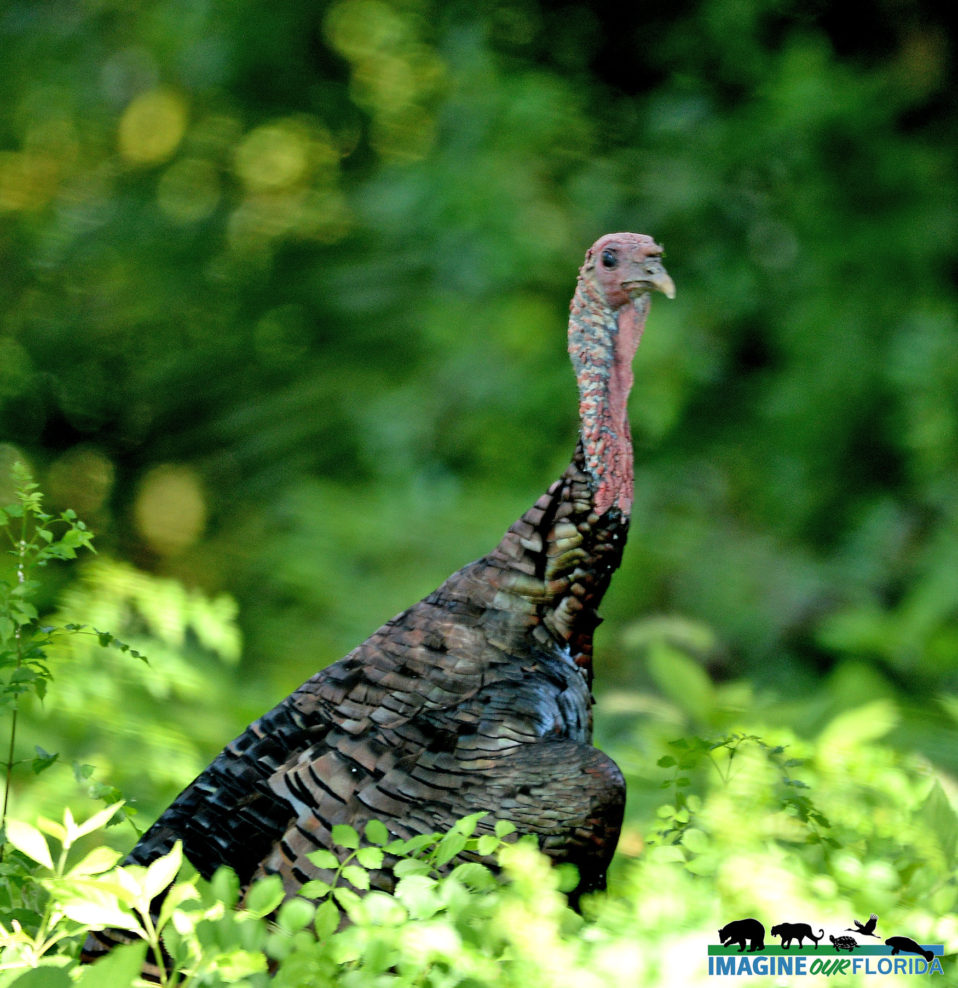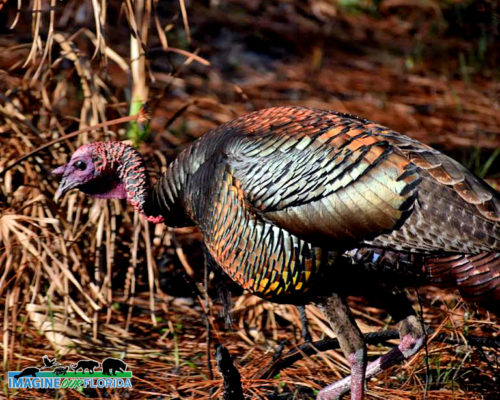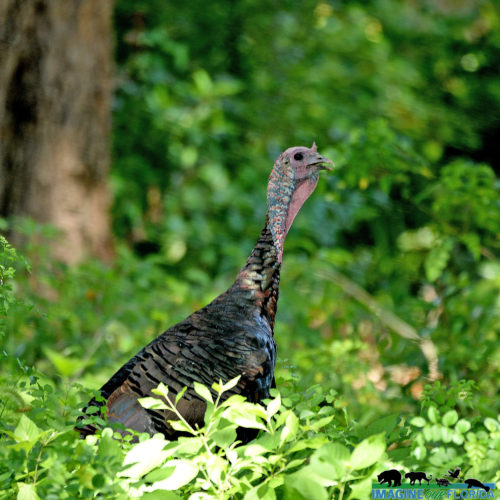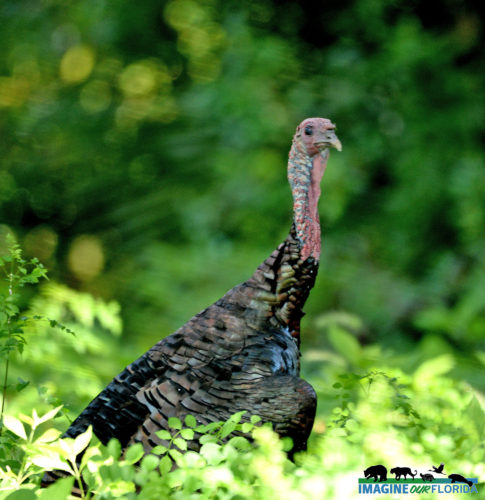Wild turkeys, Meleagris gallopavo, can be seen throughout Florida foraging in leaflitter in open areas or at the edges of forests. Insects, snails, berries, and nuts make up much of their diets. They often create flocks of up to 20 birds. At night, wild turkeys stay safe by roosting in the trees of a dense forest.
There are two subspecies of wild turkeys in Florida. The Osceola or Florida wild turkey (M.g. osceola) is only found in peninsular Florida. In the panhandle and northern Florida, the Osceola turkey breeds with the Eastern wild turkey (Meleagris gallopavo silvestris). These large chubby birds with their iridescent plumage and long legs have a wingspan of 49-56.5 inches. Females are smaller than males and not as brightly colored.
In the spring, the male wild turkey’s head will turn bright red as he struts, gobbles, and fans out his tail to attract a female. The hen will build a nest on the ground where she lays 9-11 eggs over 12-13 days. In 25-26 days, the incubated eggs will hatch. It’s not long before the young can feed themselves but they are not able to fly for two weeks. The hen will keep them safe at night under her wings for about four weeks until they are strong enough to fly to a tree to roost.
Fun Fact: Turkey fossils older than 5 million years have been found throughout the southern US.


 wil
wil
 d
d
Recent Comments